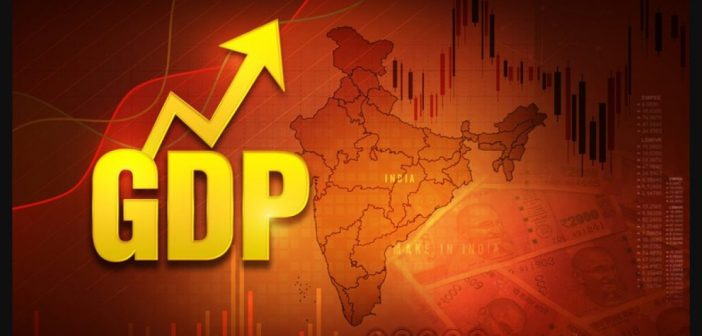India’s economic trajectory continues to be a subject of intense scrutiny. After a robust performance in 2023, the question on everyone’s mind is: can this momentum be sustained? This article delves into projections for India’s national GDP growth in 2024-2025, exploring the key drivers that will influence the nation’s economic journey.
Growth Forecasts: A Mixed Bag
Economists and rating agencies have released a range of forecasts for India’s GDP growth in 2024-2025. The International Monetary Fund (IMF) predicts a growth rate of 6.5% for 2024, while Moody’s Investors Service is slightly more optimistic, projecting 6.8%. However, Crisil Ratings tempers expectations with a forecast of 6.8% for 2025, indicating a potential slowdown.
These variations highlight the inherent uncertainties surrounding economic predictions. Global headwinds like rising interest rates and geopolitical tensions can significantly impact India’s export performance and domestic investment climate.
Fueling the Engine: Drivers of Growth
Despite the cautious outlook, several factors could propel India’s economic growth in 2024-2025:
-
Robust Domestic Consumption: India boasts a young and growing population, translating into a burgeoning consumer base. Rising disposable incomes and increasing urbanization are expected to fuel domestic demand for goods and services, particularly in sectors like retail, automobiles, and discretionary spending.
-
Government Infrastructure Push: The Indian government’s focus on infrastructure development presents a significant growth opportunity. Investments in areas like transportation, power, and digital infrastructure will not only improve connectivity but also create employment opportunities and stimulate demand across various industries.
-
Manufacturing Prowess: The “Make in India” initiative continues to gain momentum, encouraging domestic manufacturing and reducing reliance on imports. A skilled workforce and government incentives can further bolster India’s manufacturing capabilities, contributing to export growth and import substitution.
-
Digital Transformation: India’s digital revolution is reshaping the economic landscape. Government initiatives like Digital India are fostering the growth of the digital economy, encompassing e-commerce, fintech, and IT services. This digital leapfrog can unlock new avenues for economic growth and job creation.
-
Resilient Agricultural Sector: Agriculture remains the backbone of the Indian economy, providing livelihoods for a large section of the population. Continued investments in irrigation, technology adoption, and improving farm incomes can strengthen the agricultural sector’s contribution to GDP.
Potential Roadblocks: Navigating Challenges
While the aforementioned factors bode well for India’s economic prospects, certain challenges could impede growth:
-
Inflationary Pressures: Global inflationary trends, rising energy prices, and potential supply chain disruptions pose a risk to India’s inflation management. The Reserve Bank of India will need to walk a tightrope, balancing price stability with fostering economic growth.
-
Geopolitical Uncertainty: The ongoing global geopolitical situation can disrupt trade flows and investment patterns. Rising commodity prices and potential disruptions in global supply chains could adversely impact India’s economic trajectory.
-
Labor Market Dynamics: Skilling and employability remain crucial challenges in the Indian labor market. Bridging the skills gap and ensuring a workforce equipped for the evolving job market will be essential for sustained economic growth.
-
Fiscal Consolidation: India’s fiscal deficit remains a concern. Striking a balance between promoting economic growth through government spending and maintaining fiscal prudence will be critical for long-term economic stability.
Conclusion: A Balancing Act
India’s economic outlook for 2024-2025 presents a mixed picture. While robust domestic demand, government initiatives, and a growing digital economy offer promising growth drivers, inflationary pressures, geopolitical uncertainties, and labor market challenges necessitate careful navigation. The government’s ability to address these issues and promote inclusive growth will determine whether India’s economic engine continues to chug ahead in the years to come.





